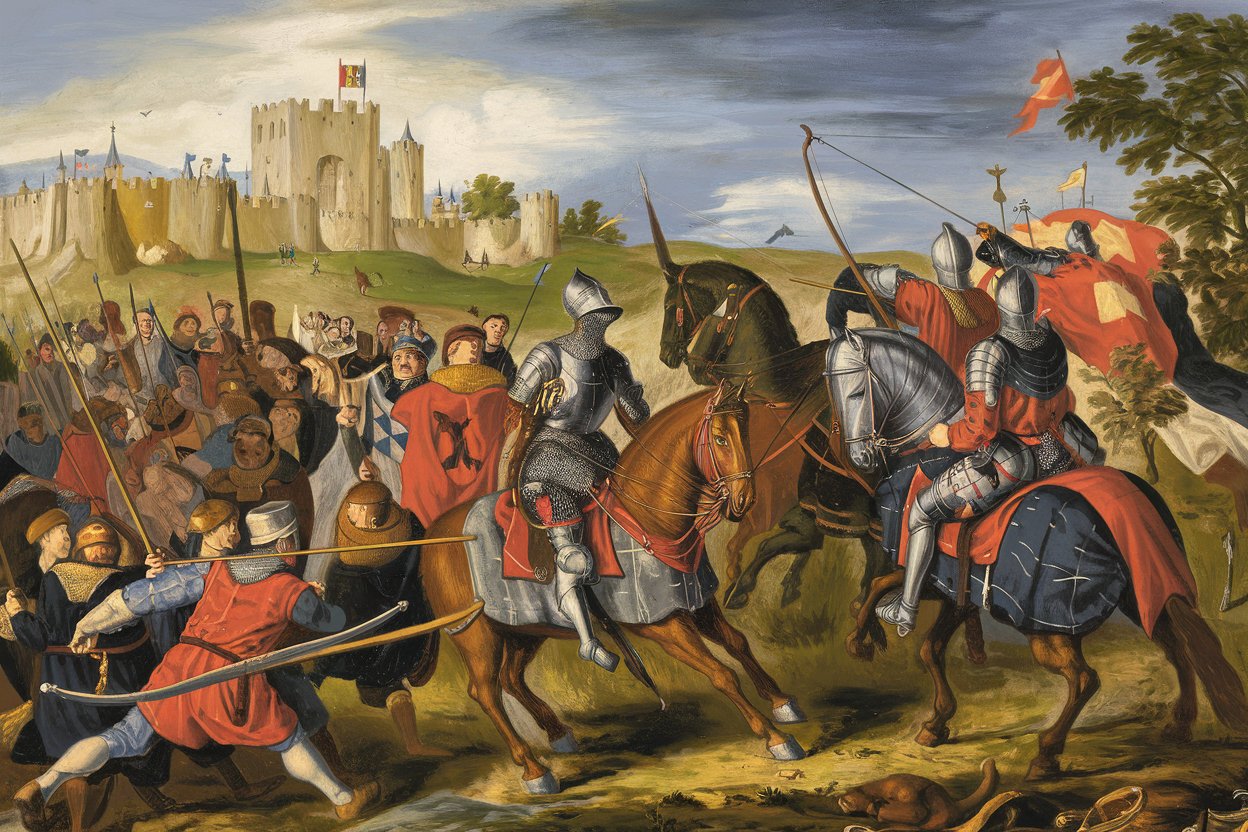
The Soest Feud was a conflict that took place in the 15th century, involving the city of Soest and the Archbishopric of Cologne. This feud, lasting from 1444 to 1449, was a significant event in medieval German history. It began when Soest, a prosperous city, sought to assert its independence from the archbishop's control. The feud saw alliances formed, battles fought, and treaties signed. Why did Soest rebel? The city's desire for autonomy, economic freedom, and political power were key reasons. This conflict reshaped regional politics and left a lasting impact on the area's development. Dive into these 25 facts to understand the intricacies and outcomes of this historical feud.
Key Takeaways:
- The Soest Feud was a 15th-century conflict between a powerful church and a wealthy town, leading to battles, sieges, and a shift in regional power dynamics.
- Soest's desire for independence, the involvement of influential allies, and the use of early artillery were key factors in the Soest Feud, shaping the region's political and social landscape.
The Soest Feud: A Brief Overview
The Soest Feud, a conflict that took place in the 15th century, was a significant event in German history. It involved a series of battles and political maneuvers between the Archbishopric of Cologne and the town of Soest. This feud had lasting impacts on the region's political landscape.
- The Soest Feud began in 1444 and lasted until 1449.
- It was primarily a conflict between the Archbishopric of Cologne and the town of Soest.
- The feud started because Soest wanted to gain independence from the Archbishopric's control.
- Soest was a wealthy and strategically important town in Westphalia.
- The town's desire for autonomy was fueled by its economic prosperity and strategic location.
Key Players in the Soest Feud
Several important figures played crucial roles in the Soest Feud. Understanding these key players helps to grasp the complexity of the conflict.
- Archbishop Dietrich II of Moers led the Archbishopric of Cologne during the feud.
- The town of Soest was represented by its council and leading citizens.
- Duke Adolf of Cleves supported Soest in its quest for independence.
- The Hanseatic League, a powerful commercial and defensive confederation, also backed Soest.
- The conflict drew in various other regional powers, including the Duchy of Berg and the County of Mark.
Major Battles and Sieges
The Soest Feud saw several significant battles and sieges that shaped the course of the conflict.
- The Siege of Soest in 1447 was one of the most notable events of the feud.
- During the siege, Soest's fortifications proved to be a formidable barrier against the Archbishopric's forces.
- The Battle of Varlar in 1448 was another critical engagement, resulting in a decisive victory for Soest and its allies.
- The conflict saw the use of early artillery, which played a significant role in the sieges.
- The prolonged nature of the feud led to widespread devastation in the surrounding regions.
Political and Social Impacts
The Soest Feud had far-reaching political and social consequences for the region.
- The feud significantly weakened the power of the Archbishopric of Cologne.
- Soest gained a considerable degree of autonomy as a result of the conflict.
- The feud contributed to the decline of feudalism in the region.
- The conflict also highlighted the growing importance of towns and cities in medieval politics.
- The Hanseatic League's involvement in the feud demonstrated its influence in regional affairs.
Legacy of the Soest Feud
The Soest Feud left a lasting legacy that continued to influence the region long after the conflict ended.
- The feud is remembered as a pivotal moment in the history of Soest and Westphalia.
- It marked a shift in the balance of power between ecclesiastical and secular authorities.
- The conflict is often cited as an example of the growing assertiveness of towns and cities during the late Middle Ages.
- The Soest Feud is still studied by historians as a significant event in German medieval history.
- The legacy of the feud can be seen in the continued importance of Soest as a regional center in modern times.
The Final Word on the Soest Feud
The Soest Feud was a pivotal conflict in German history, shaping the region's political landscape. It involved key players like the Archbishop of Cologne and the Duke of Cleves, each vying for control. This feud wasn't just about power; it also influenced trade routes and local economies. The Treaty of Xanten eventually ended the feud, but its effects lingered for years. Understanding this feud gives insight into medieval power struggles and alliances. The Soest Feud is a reminder of how local disputes can have lasting impacts. If you're a history buff or just curious, diving into this topic can be quite rewarding. The Soest Feud's legacy is a testament to the complexities of medieval politics and the enduring nature of historical conflicts.
Frequently Asked Questions
Was this page helpful?
Our commitment to delivering trustworthy and engaging content is at the heart of what we do. Each fact on our site is contributed by real users like you, bringing a wealth of diverse insights and information. To ensure the highest standards of accuracy and reliability, our dedicated editors meticulously review each submission. This process guarantees that the facts we share are not only fascinating but also credible. Trust in our commitment to quality and authenticity as you explore and learn with us.
